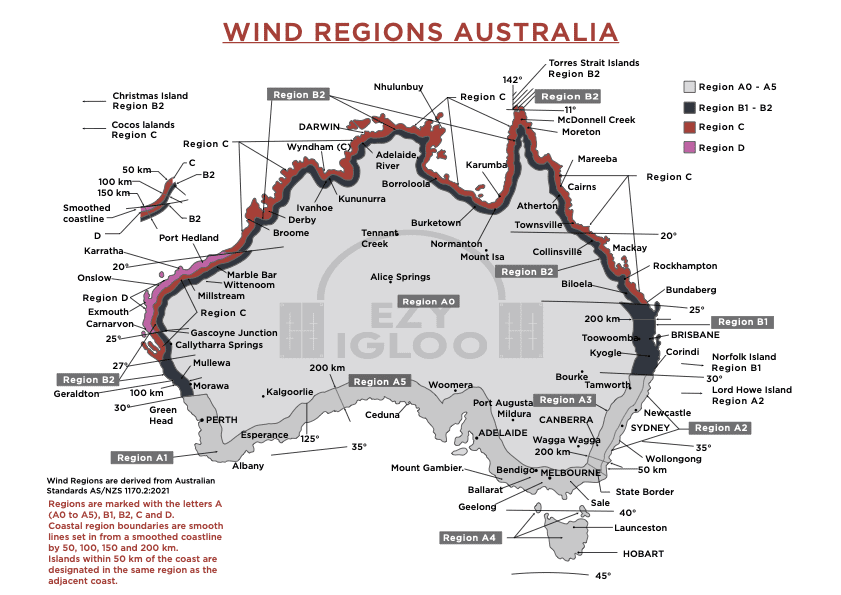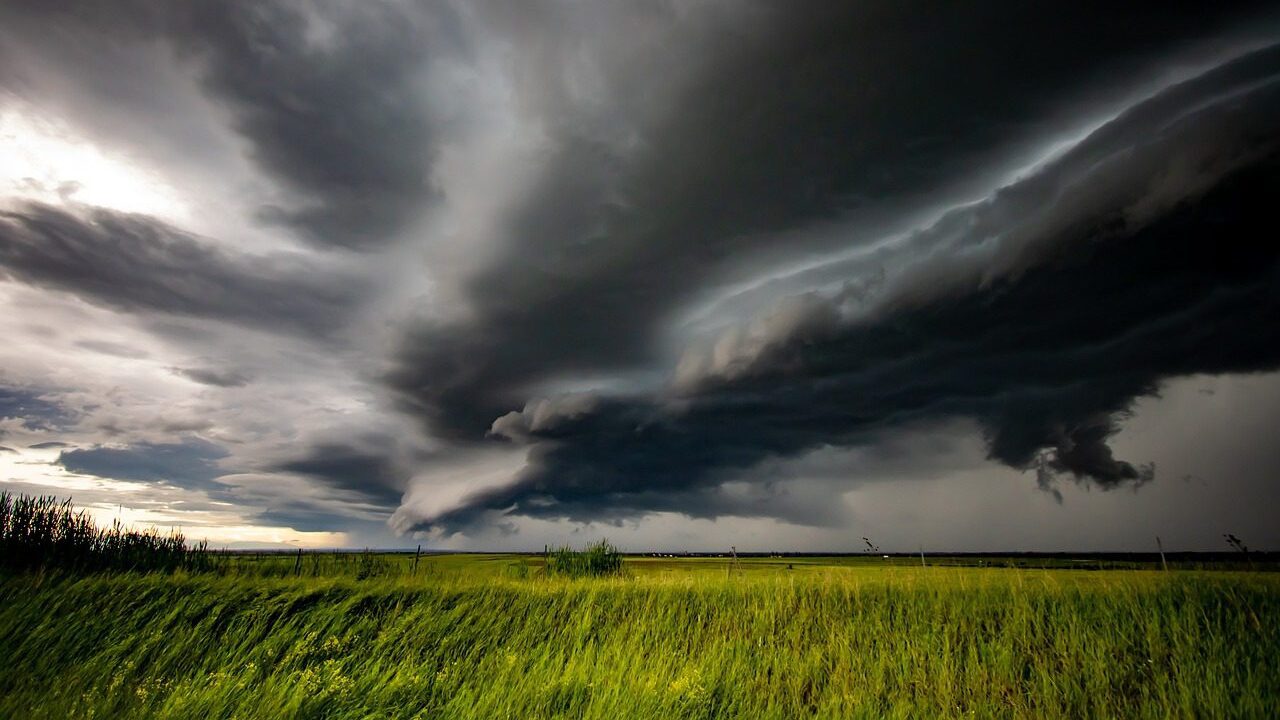Our vast landscape here in this country comes with diverse weather conditions, which makes it essential to understand the wind regions of Australia, especially when investing in outdoor structures like container domes. The Australian Standards AS1170.2021 classify wind regions across the country to help businesses and individuals make informed decisions about construction and safety.
At Ezy Igloo, we’re passionate about providing reliable dome solutions tailored to your specific Australian wind region. This guide will help you understand the importance of wind regions and how they affect your choice of storage and shelter solutions.

What Are Wind Regions?
The AS1170.2021 standard updates previous guidelines (AS1170.2:2011) to ensure structures built in this country can withstand wind forces safely. Wind regions are classifications based on wind speeds and the frequency of extreme weather events in different parts of Australia.
These regions are divided into four categories — Regions A, B, C, and D. Each one of these categories represents varying wind speeds and other characteristics. Understanding these is needed to help you choose the right outdoor structure for your location.
Wind Regions in Australia
Region A
This region covers much of Australia’s inland, with relatively lower wind speeds. Subcategories (A0 to A5) reflect varying conditions like prevailing wind directions and local geography.
Region B
Region B encompasses coastal areas with moderate wind speeds. These locations experience stronger winds than Region A because of their proximity to the ocean.
Region C
Cyclone-prone areas in northern Australia, including parts of Queensland, the Northern Territory, and Western Australia, fall under Region C. These locations face high wind speeds due to tropical storms and cyclones.
Region D
The most extreme wind region, Region D, includes areas along Western Australia’s coastline where cyclonic winds are common. Structures here must withstand the harshest weather conditions.
Check out the wind zone map of Australia above to get a visual guide to the different wind regions in this country. If you need some help understanding the wind ratings for your area, though, don’t be afraid to call us to get some helpful advice.

Why Wind Regions Matter
You might think that the wind regions of Australia have nothing to do with you, but if you plan on adding a structure to your property or business location, the reality is that you do need to understand the different wind regions we have here. Here are some of the key reasons why these wind regions matter for both individuals and businesses:
Human & Animal Safety
Structures that aren’t designed for the local wind region risk failure during severe weather, endangering both human and animal lives, as well as property. By adhering to Australian standards and understanding and catering to the wind regions, you ensure safety for all and minimise risks.
Proper Compliance
The AS1170.2021 standard ensures your structures meet legal safety requirements. Compliance protects your business and yourself from potential legal or workplace safety issues that could arise if you don’t follow the standards accordingly.
Durability & Cost Cutting
Structures designed for specific wind regions here in Australia last longer and require less maintenance over time than those that aren’t designed as such. By focusing on the proper solutions for your wind region, you will save money by not having to replace your container dome or other structure very often, and you’ll save maintenance time, too.
Choosing the Right Dome for Your Wind Region
At Ezy Igloo, we design our domes and container sheds to meet the demands of all wind regions, ensuring safety and durability across Australia. We’re proud to say that all our designs are cyclone-rated and engineer-certified to handle Wind Regions A through C, so you can have peace of mind if you’re located in an area that is prone to this type of severe weather.
Here’s what you should consider when selecting the right structure for your property:
Region A: Low Wind Speeds
For inland areas, our standard domes provide excellent protection and durability.
Region B: Moderate Wind Speeds
Coastal locations require reinforced domes to handle the stronger winds effectively.
Region C: Cyclone-Prone Areas
Our cyclone-rated domes are specifically engineered to withstand the high wind speeds common in cyclone-prone regions.
Region D: Extreme Wind Conditions
For the toughest conditions, specialised domes that offer unmatched stability and security are required.
Ezy Igloo: Your Partner in Weather-Resilient Solutions
At Ezy Igloo, we prioritise safety, compliance, and quality when creating our designs. All our domes are engineer-certified to meet the stringent requirements of AS1170.2021, with reliable options for every wind region in Australia. Whether you need a dome for storage, workshops, or any other purpose, our products are built to handle our nation’s diverse weather conditions.
Know Your Wind Region Before You Buy
Understanding wind regions and adhering to the AS1170.2021 standard is crucial for selecting the right dome structure. By considering your local wind ratings in Australia, you can invest confidently, knowing your assets are protected.
Before purchasing, our team can work with you to identify your location’s wind region and recommend the best dome solution, so if you’re concerned about making the best purchase, you don’t need to worry. Plus, our products come in multiple sizes and offer easy installation, too, so there’s a solution for every need.
To get a free quote or obtain some more information, get in touch with the friendly team at Ezy Igloo today. Let us help you find the perfect weather-resistant solution for your needs!

